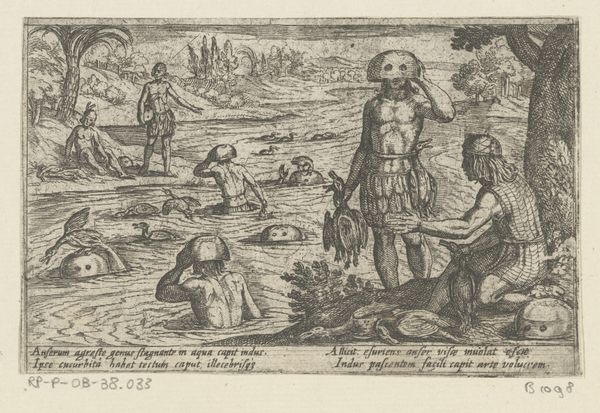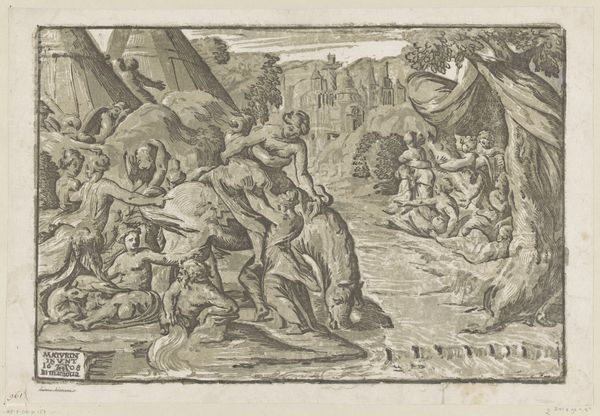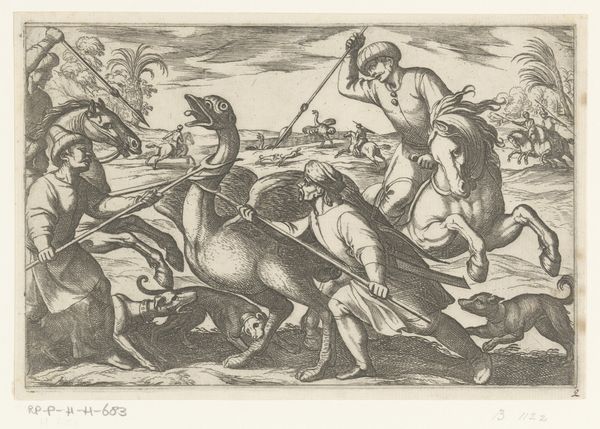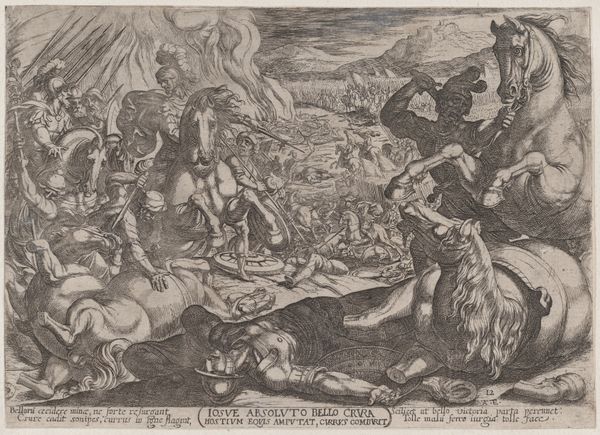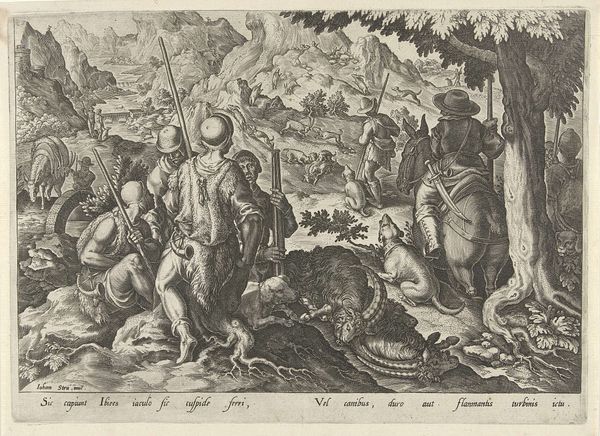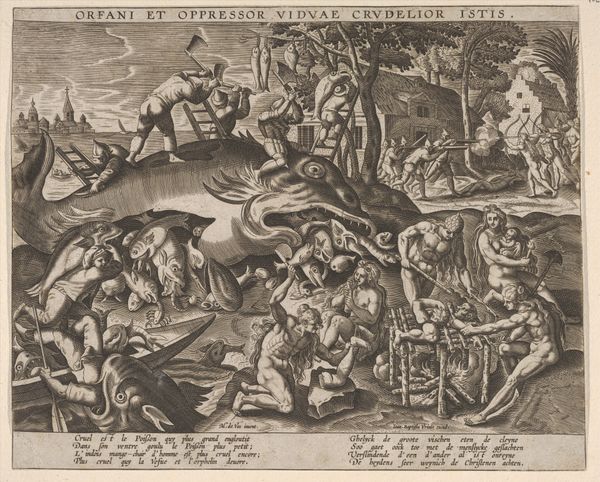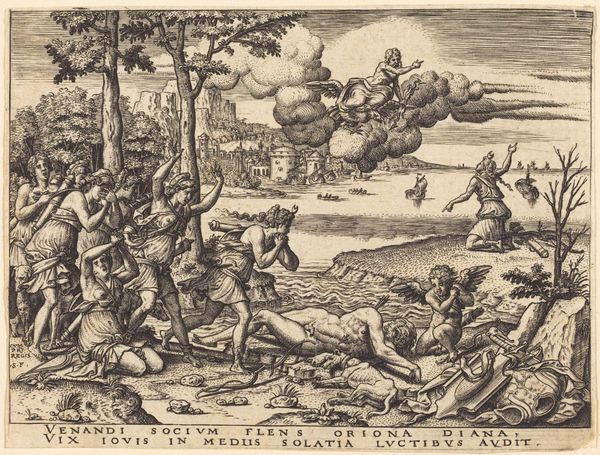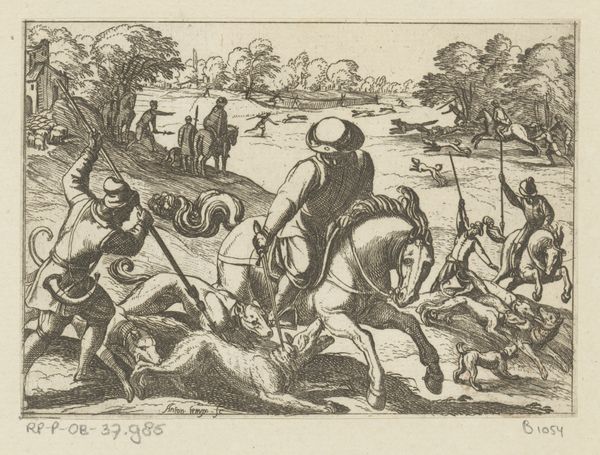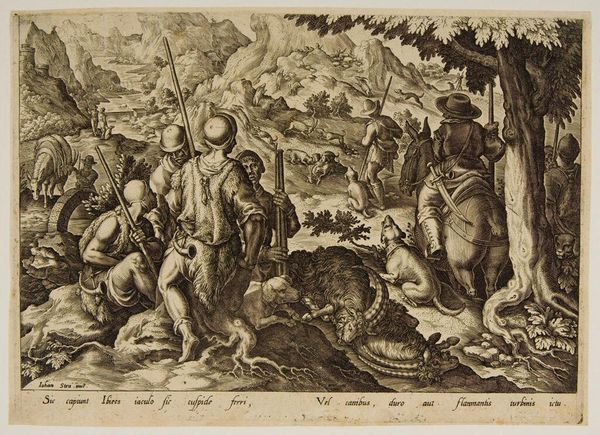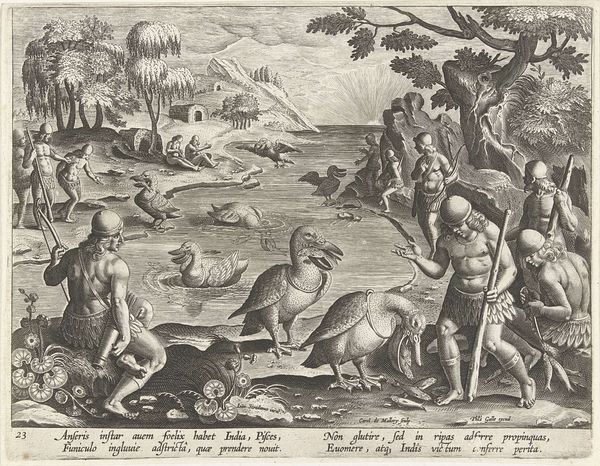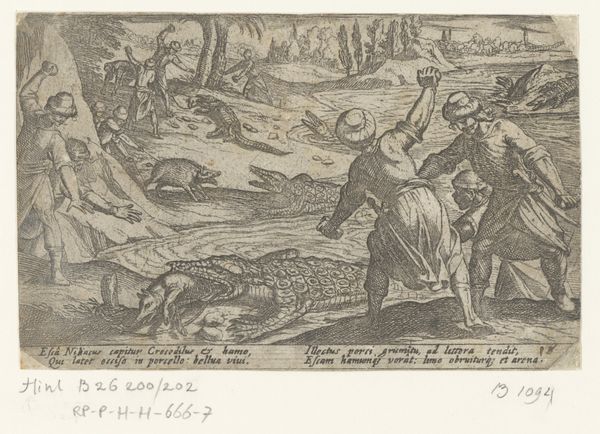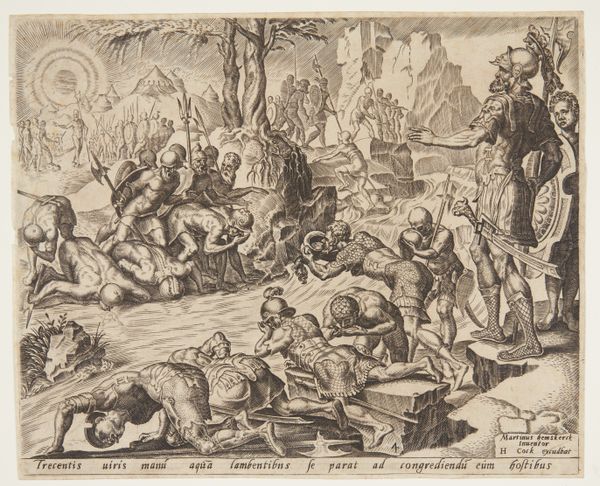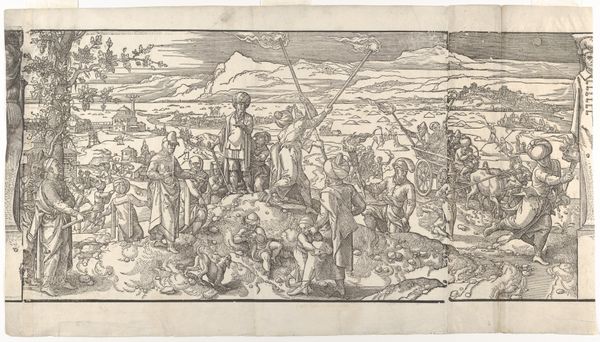
print, engraving
#
baroque
# print
#
landscape
#
figuration
#
history-painting
#
engraving
Dimensions: height 94 mm, width 147 mm
Copyright: Rijks Museum: Open Domain
Editor: Here we have Antonio Tempesta’s engraving, "Hunters Catching Snakes," created in 1602. There's quite a bit of detail packed into this small scene. It almost feels like a freeze-frame from a much larger narrative. How do you interpret this work, particularly its social context? Curator: This print is a fascinating glimpse into the cultural and socio-economic relationships between humans and nature in the early 17th century. Prints like this, especially landscapes populated with figures, were crucial for disseminating knowledge about the world. Consider the idea of Italy presented to viewers, it’s an Italy brimming with both danger, as represented by the snakes, and opportunity, through the potential medicinal use implied by the inscriptions at the bottom. Editor: Medicinal use? That’s not something I would have initially considered. The hunters seem more focused on eradication. Curator: But observe how carefully the snakes are being handled. These weren't just vermin to be exterminated, they possessed economic value. Venom was a key component of many early modern medicines. The print subtly underscores how resources were gathered, processed, and then transformed into commodities. Notice the collaborative effort on display—a social dynamic reflected in the hunt itself. It also prompts the question: who was the intended audience for such a piece? Editor: Perhaps apothecaries, physicians, or even collectors of curiosities? The detail and precision would have appealed to those invested in both science and art. Curator: Precisely. Prints functioned as mobile educational tools, accessible to a wider public than unique paintings. And furthermore, images like this subtly reinforced existing power structures and beliefs about nature's bounty awaiting extraction and human modification. It's an early manifestation of a human desire for domination over, or control of, nature. Editor: I never considered the layers of economic and social relationships represented here, or how those ideas about control may have shaped the early-modern reception of an image such as this. Thank you for widening my view!
Comments
No comments
Be the first to comment and join the conversation on the ultimate creative platform.
